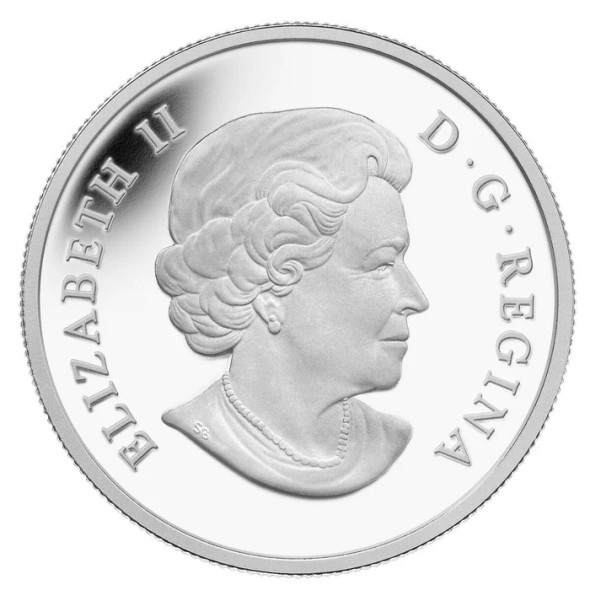Description
To celebrate Canada’s rich biodiversity, the Royal Canadian Mint highlights the animal kingdom’s family bonds in a series that features endearing images of Canada’s baby animals. The seventh coin in this series showcases Canada’s legendary porcupine (Erethizon dorsatum) species with a touching image of a young porcupine (porcupette) learning to forage alongside its mother in one of Canada’s many forests.
PRODUCT SPECIFICATIONS
SRP: $99.95
Composition: 99.99% pure silver
Mintage: 7,500
Weight (g)*: 31.39
Diameter (mm): 38
Face Value: $20
Finish: Proof
Edge: Serrated
Artist: Trevor Tennant
Packaging: Maroon clamshell with black beauty box
SPECIAL FEATURES
- Seventh coin in the Royal Canadian Mint’s Baby Animals series that tenderly depicts young wildlife in a natural setting.
- Finely-detailed engraving is complemented by the use of selective colouring to recreate the porcupette’s dark-coloured coat and its pink clover feast.
- Crafted from 99.99% pure silver with a limited mintage of 7,500.
- A superb addition to any Canadiana-, wildlife- or nature-themed collection.
- A heart-warming gift for any animal lover and a wonderful start to a young person’s collection.
DESIGN
The reverse design by Canadian artist Trevor Tennant depicts a young porcupine (porcupette) in one of Canada’s many forests. Selective colour enhances the detailed engraving and brings this side-view image to life, recreating the porcupette’s dense black coat intermingled with long guard hairs and white-tinged quills. While the mother in the engraved background has turned a curious eye toward the viewer, the dark-coloured porcupette seems unconcerned with our intrusion; its attention is innocently focused on the pink clover and green leaves that have sprung up from the forest floor at the foot of a tree. Gripping the wildflower in its forepaw, the porcupette brings it to its mouth to enjoy a small feast as part of the transition to its herbaceous diet.







